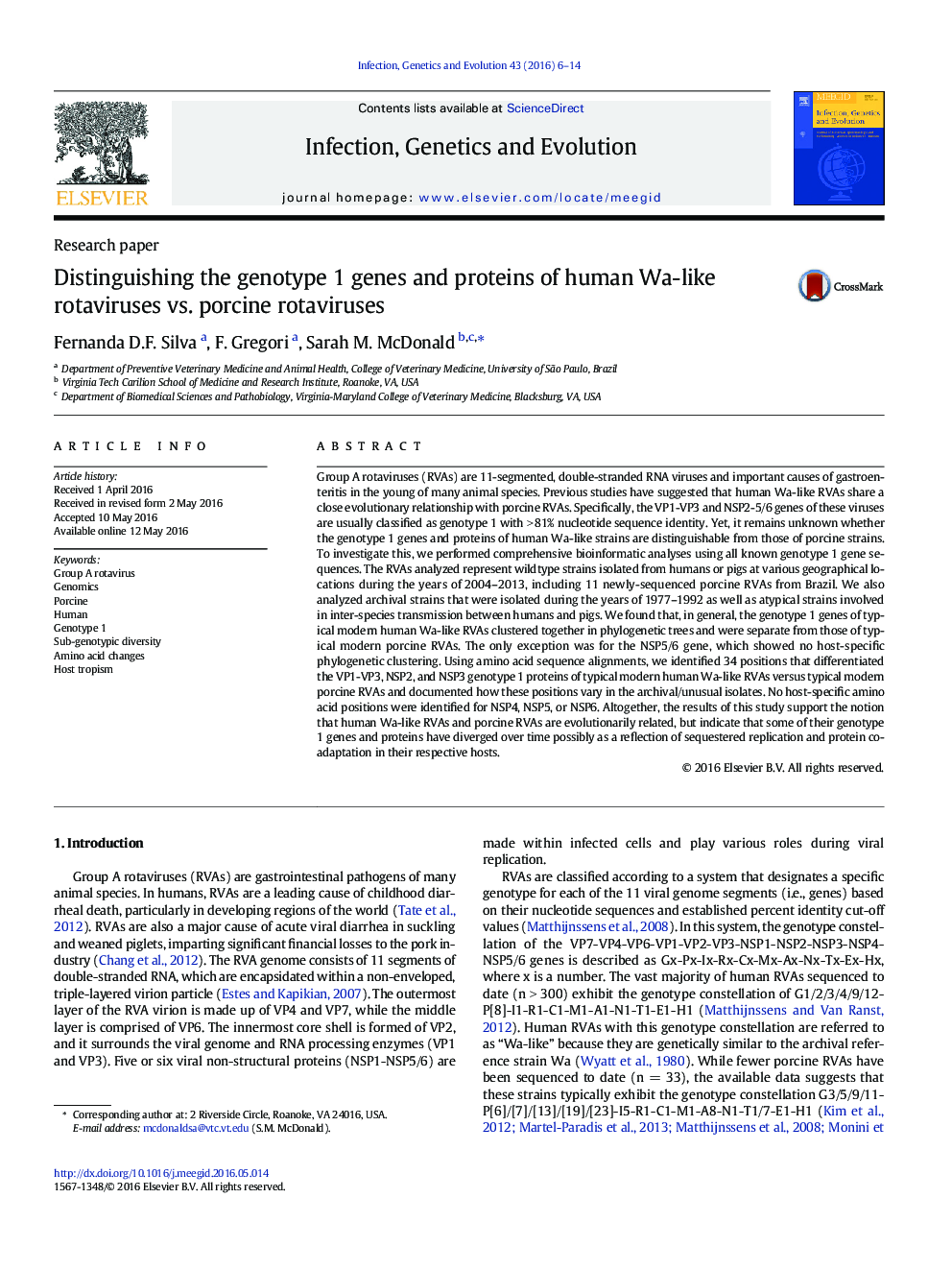| کد مقاله | کد نشریه | سال انتشار | مقاله انگلیسی | نسخه تمام متن |
|---|---|---|---|---|
| 2822937 | 1570160 | 2016 | 9 صفحه PDF | دانلود رایگان |

• Previous studies have suggested that human Wa-like rotaviruses share a close evolutionary relationship with porcine rotaviruses because their VP1-VP3 and NSP2-5/6 genes are usually classified as genotype 1 (> 81% nucleotide sequence identity).
• To investigate whether the genotype 1 genes and proteins of human Wa-like strains are distinguishable from those of porcine strains, we performed comprehensive bioinformatic analyses.
• We found that, in general, the genotype 1 genes of typical modern human Wa-like RVAs clustered together in phylogenetic trees and were separate from those of typical modern porcine RVAs.
• Using amino acid sequence alignments, we identified 34 positions that differentiated the VP1-VP3, NSP2, and NSP3 genotype 1 proteins of typical modern human Wa-like RVAs versus typical modern porcine RVAs.
• These results enhance our understanding of RVA genetic diversity and elucidate putative hostspecific evolutionary signatures of genotype 1 viral proteins.
Group A rotaviruses (RVAs) are 11-segmented, double-stranded RNA viruses and important causes of gastroenteritis in the young of many animal species. Previous studies have suggested that human Wa-like RVAs share a close evolutionary relationship with porcine RVAs. Specifically, the VP1-VP3 and NSP2-5/6 genes of these viruses are usually classified as genotype 1 with > 81% nucleotide sequence identity. Yet, it remains unknown whether the genotype 1 genes and proteins of human Wa-like strains are distinguishable from those of porcine strains. To investigate this, we performed comprehensive bioinformatic analyses using all known genotype 1 gene sequences. The RVAs analyzed represent wildtype strains isolated from humans or pigs at various geographical locations during the years of 2004–2013, including 11 newly-sequenced porcine RVAs from Brazil. We also analyzed archival strains that were isolated during the years of 1977–1992 as well as atypical strains involved in inter-species transmission between humans and pigs. We found that, in general, the genotype 1 genes of typical modern human Wa-like RVAs clustered together in phylogenetic trees and were separate from those of typical modern porcine RVAs. The only exception was for the NSP5/6 gene, which showed no host-specific phylogenetic clustering. Using amino acid sequence alignments, we identified 34 positions that differentiated the VP1-VP3, NSP2, and NSP3 genotype 1 proteins of typical modern human Wa-like RVAs versus typical modern porcine RVAs and documented how these positions vary in the archival/unusual isolates. No host-specific amino acid positions were identified for NSP4, NSP5, or NSP6. Altogether, the results of this study support the notion that human Wa-like RVAs and porcine RVAs are evolutionarily related, but indicate that some of their genotype 1 genes and proteins have diverged over time possibly as a reflection of sequestered replication and protein co-adaptation in their respective hosts.
Journal: Infection, Genetics and Evolution - Volume 43, September 2016, Pages 6–14